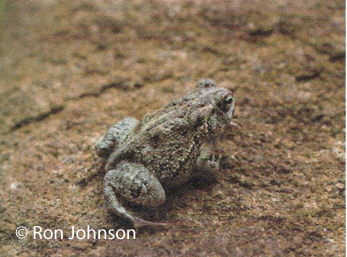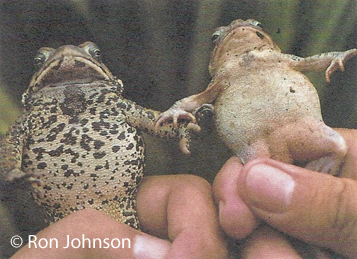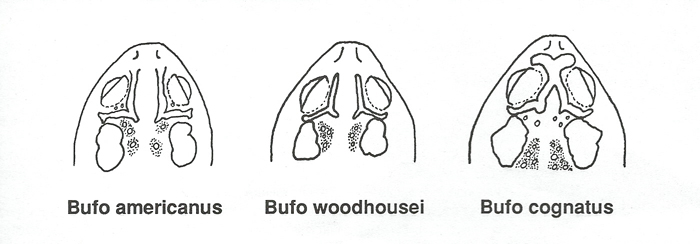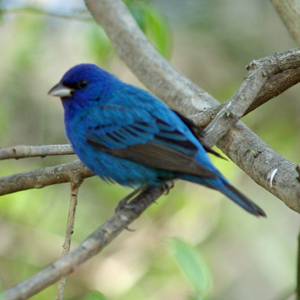Bufonidae
Bufo woodhousei, Woodhouse's Toad
Woodhouse's toad
has a light midline on the back on a background of brown or
gray. The warts are often in sets of two or more on each dark
brown spot. The cranial ridges
are in contact with the elongated parotoid glands and the
underside is white except for a small dark gray spot well
forward on the breast. This is
especially prominent in specimens from eastern Iowa. The dark
throat pouch of males of most toads covers most of the throat
and is much larger than the breast spot.
The best single feature to separate Woodhouse's toad from
the American toad is the white underside of Bufo woodhousei,
whereas American toads have the breast mottled with gray.
Other distinctions are less reliable since American toads also
usually have a weak mid-dorsal stripe and it is at times
difficult to distinguish the spots bearing the warts. Bufo
americanus and B. woodhousei occasionally hybridize
producing intermediate individuals. Hybrids have been found in
both southeastern and southwestern Iowa. Great plains toads have
large olive-colored blotches
and are easy to distinguish from either of the other species.
There are two subspecies of Bufo woodhousei in
Iowa. Woodhouse's toad, Bufo woodhousei woodhousei, occurs in the western two tiers of counties north to Plymouth
County and is large, more than 4 inches (103 mm) long. Fowler's
toad, Bufo woodhouseifowleri, is found in southeastern
Iowa north to Scott County and is much smaller. The largest
specimen we have found is only 3 1/4 inches (81 mm) long.
The call of Bufo
woodhousei is a
sheeplike, flat "wa-a-a-
a," an almost buzzing,
non-melodious trill. It sounds a Iittle like the cry of
a newborn child. This toad calls in May and June, later
than most American toads. Woodhouse's toad is more adapted to
arid conditions than American toads and is nearly limited in
western Iowa to the loess hills and the adjacent
Missouri River floodplain. Fowler's
toad is found in more-or-less
arid, sandy habitats in southeastern Iowa. Both subspecies are
abundant wherever they occur in Iowa.
American toad (mottled breast on left) and Woodhouse's toad on right.



.jpg)
